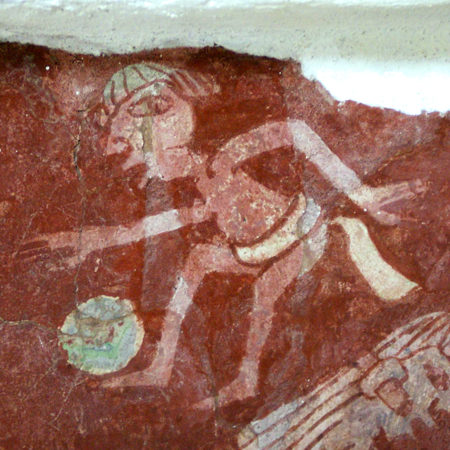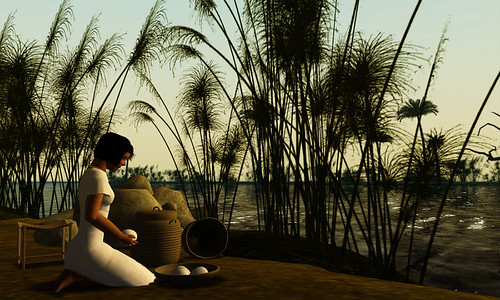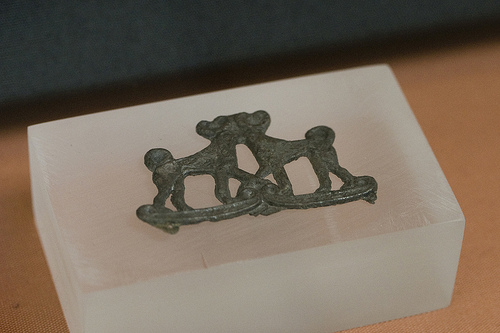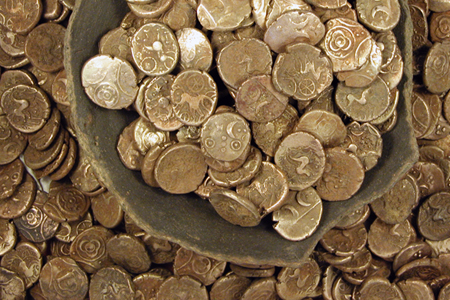Imagine getting your hands on King Tut’s mummy? Researchers at the University of California, San Diego, have created a new – relatively – low-cost virtual reality device that allows users not only to see a three-dimensional image, but to ‘feel’ it too (watch the video). From the same two California Institute for Telecommunications and Information Technology (CALIT2) engineers who created the VR system NexCave comes a new and ‘affordable’ solution for handling three-dimensional virtual objects. Tom Defanti and Greg Dawe’s heads-up virtual reality device (HUVR in short) combines a consumer 3D HDTV panel with a half-silvered mirror to project any graphic image…
-
-
The Scottish Ten – a team of heritage conservators and digital design experts from Historic Scotland and the Glasgow School of Art – have finished laser scanning ‘the Heart of Neolithic Orkney’, Scotland (and the results are fabulous). As they aim to ‘digitally preserve’ five Scottish World Heritage Sites and five international sites, the team now moves on to Rani Ki Vav Stepwell, a thousand-year-old site in India. At Orkney, the Scottish Ten have recorded Maeshowe (a large chambered cairn), the Standing Stones of Stenness and the Ring of Brodgar (ceremonial stone circles), the Barnhouse Stone, the Watch Stone and Skara…
-
It might have taken Europeans until the 19th century to make rubber, but Mesoamericans were playing with bouncy balls back in 1,600 BC. And not only were pre-Columbians the world’s first polymer scientists, but new research suggests they fine-tuned their discovery for different uses. According to Professor Dorothy Hosler and Michael Tarkanian of the Massachusetts Institute of Technology (MIT) cultures like the Mexica, Olmec and Maya perfected a chemical processing system to create rubber with varying qualities. Bouncy rubber was used for rubber balls, used during the legendary Mesoamerican ball-game (see more ancient sports), while axe-heads were fastened with a…
-
A 3,000-year-old double limestone granite statue of pharaoh Amenhotep III is discovered near Luxor, Egypt. The statue was found at Kom el-Hittan, at the northern entrance of the funerary temple of Amenhotep III – once one of the largest temples on the west bank of the Nile. Egypt’s Minister of Culture, Farouk Hosni, said that the statue depicts Amenhotep III seated on a throne accompanied by the – now headless – Theban god, Amun. The 18th Dynasty pharaoh – who ruled from about 1410 to 1372 BC – wears the double crown of Egypt, which is decorated with a uraeus. Mr.…
-
The Museum of Fine Arts, Boston and 3D software company Dassault Systèmes have announced they will join forces in a partnership that aims to bring the power of industry as well as experimental 3D to the domain of archaeology. The MFA’s Giza Archives Project digital database will be “the first to benefit from the power of interactive, immersive and multi-platform 3D experiences” as the team intents to create new possibilities for the visualisation of archaeological data for both the scientific community and the general public. (preview video 1 – preview video 2) Visualisation of Archaeological Data for Education and Research…
-
Emperor Constantine had quite a splendid sense of humour for a Roman, but he couldn’t stand criticism. When in the fifth century one of his court jesters boasted that fools and jesters of the court could rule the empire better than the Emperor himself, Constantine decreed that the fools would get their chance at proving this claim. The ruler set aside one day in the year upon which a fool would reign the great Roman Empire. The first year, Constantine appointed a jester named Kugel as rule, who immediately ordained that only the absurd would be allowed on that day.…
-
With Bettany Hughes’ documentary ‘Atlantis: The Evidence’ set to première on BBC Two, what better way to prepare than to explore the Aegean Bronze Age treasures of the British Museum? If the Minoan civilisation was indeed home to the Atlantis legend, what better way to get to know the Atlanteans than through what they left behind? And, lets face it, visiting London’s most famous museum is far easier than getting a permit to dig beneath the sphinx. 😉 Though not that many items excavated by Arthur Evans can be found at the British Museum – I probably should have visited the…
-
Archaeologists have discovered the 3,300 year-old tomb of Ptahmes, 19th Dynasty army leader and royal scribe, at Saqqara. The discovery of the tomb – dated to the second half of the 19th Dynasty (1203-1186BC) – by the Archaeological Faculty of the Cairo University was announced today, putting an end to a 300-year-old archaeological riddle. Ptahmes’ tomb is 70 metres long and contains numerous chapels. Dr Zahi Hawass commented its design is similar to that of the tomb of Ptah Im Wiya, a royal sear bearer who lived during the reign of Pharaoh Akhenaten, discovered in 2007 by Dutch archaeologists. As…
-
With Summer Solstice 2010 near, we’re starting to prepare for our trip to Stonehenge to – hopefully – see the sun rise above the heel stone. (Go here for live updates from the Solstice celebrations or photos from the 2010 Solstice.) We can’t command the weather (only in our Stonehenge Solstice Virtual, where it is never cloudy), but we can supply some information and tips to make sure you get the most out of your Stonehenge Summer Solstice visit. Read on for tips on how to get to Stonehenge, what (not) to bring and wear. If you’re going, let us know in…
-
From May 3rd until June 10th, the Ipswich Museum is hosting a free sneak preview of 2,000-year-old Iron Age gold coins once belonging to Boudicca’s Iceni tribe. The 200 coins on display are part of the Wickham Market hoard, discovered in 2008. The Wickham Market hoard consists of 840 Iron Age gold coins which makes it the largest the largest hoard of its type found in Britain since 1849 (and is featured in our Top 10 Metal Detector Discoveries). Almost all of the coins belong to the Iceni tribe but five of them were ‘issued’ by a neighbouring tribe from…








